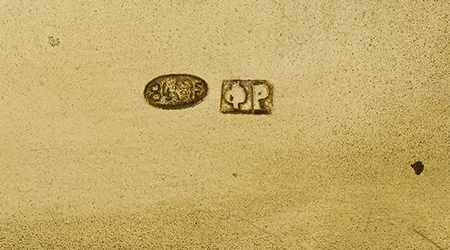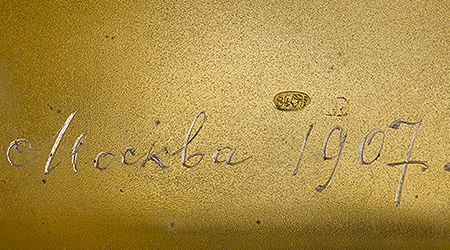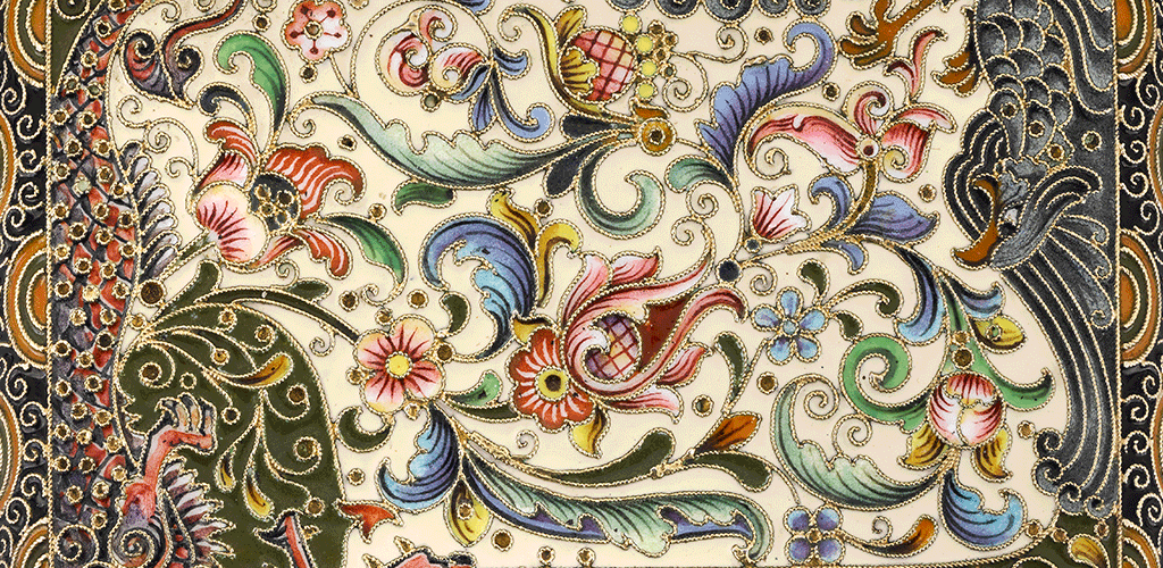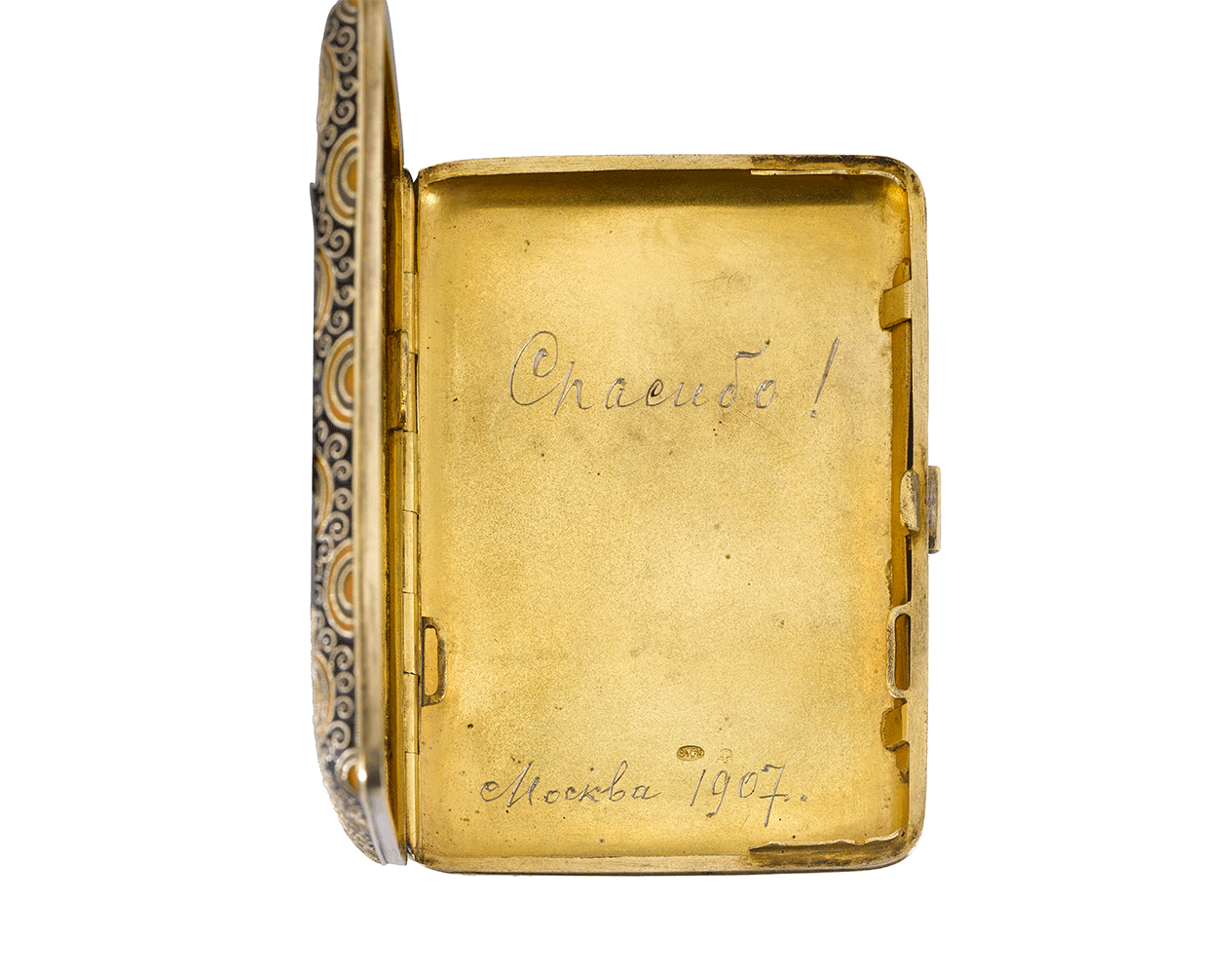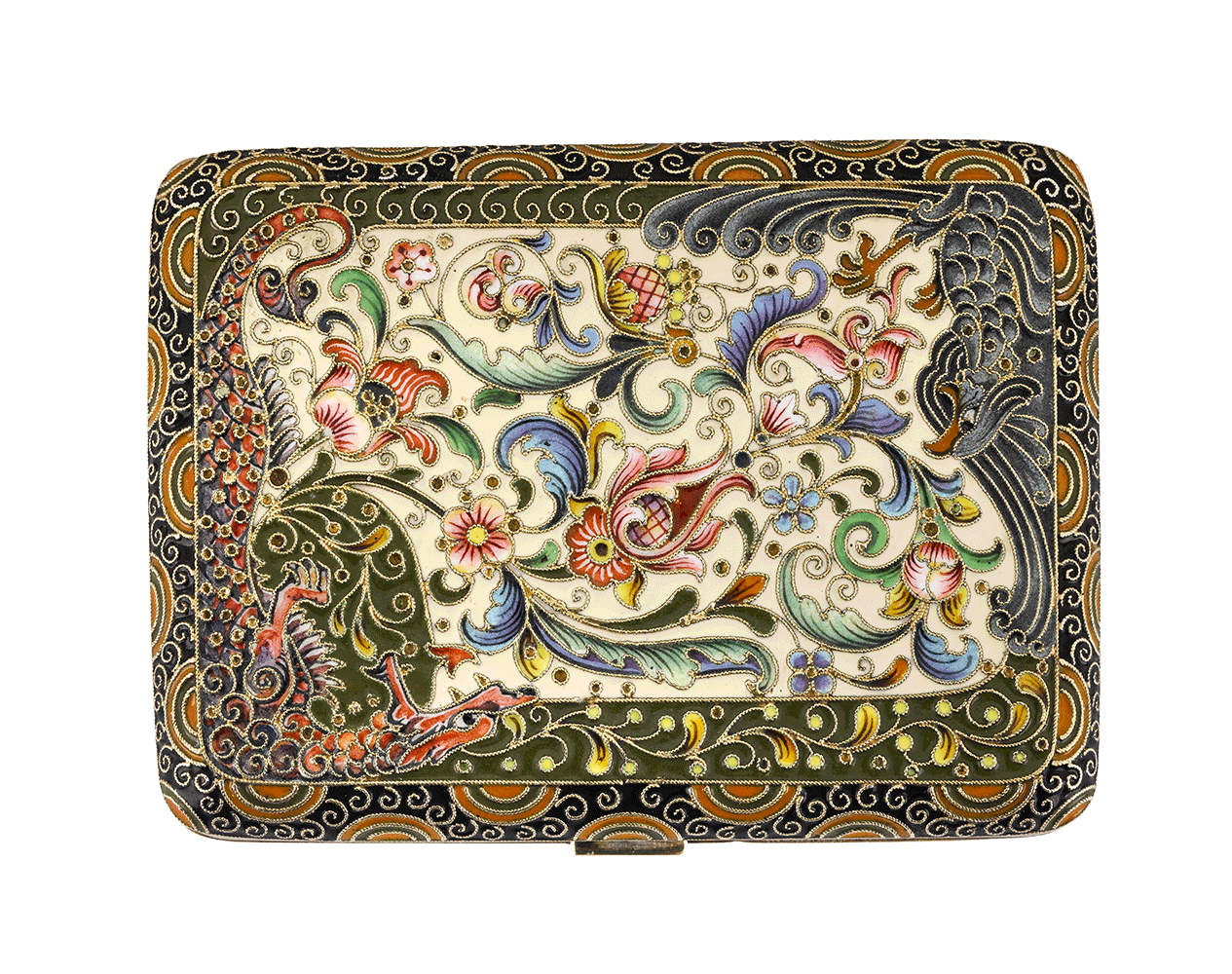A silver-gilt cigarette case decorated with chinoiserie motifs of Dragon and Phoenix or Simurgh amid dark blue borders with a geometric pattern; contained in the original retailer’s fitted case with silk and velvet lining, the interior of the lid stamped in Cyrillic ‘Kurlyukov, Moscow’ beneath the Imperial warrant. The gilt interior of the case stamped with the workmaster’s initials F.R. in Cyrillic for Fyodor Rückert, 84 – Russian standard, Moscow, assay master’s initials I.L in Cyrillic for Ivan Lebedkin; engraved with a presentation inscription: Thank you / Moscow 1907.
Fabergé’s main supplier of cloisonné enamels was Fyodor Rückert (1840-1917), a craftsman of Alsatian origin who worked for Fabergé from the opening of the Moscow branch in 1887 (for Rückert’s biography see T. Muntyan “Fyodor Ivanovich Rückert” in Fabergé, Imperial Craftsman and His World, London, 2000, pp. 80-81). In addition to supplying Fabergé, Rückert produced objects for a number of other silversmiths including Ovchinnikov, Kurlyukov and Marshak.
Rückert’s first dated enamels belong to a group hallmarked with a “kokoshnik” pertaining to the period between the late 1880s and 1908. A large number of these enamels were produced by Rückert for his own account and therefore bear only his own initials without the retailer’s hallmark. These early works show a light palette and exclusive use of shaded enamels. Cloisonné enamel covers the entire surfaces of the articles decorated with flowers and foliage in pastel colours set against cream-coloured grounds. This type of decoration derives from the study of so-called “Usolsk” enamels of the late 17th century produced in Solvychegodsk in Northern Russia. Rückert’s version of Usolsk enamels often involves the use of dense scrolling foliage and flowers, when compared to the sparser decoration of the 17th-century originals, thick twisted wires as cloisons and unusual background colours such as brick-red, olive-green, lavender, pink and pale-blue. Other workshops follow in Rückert’s wake.
